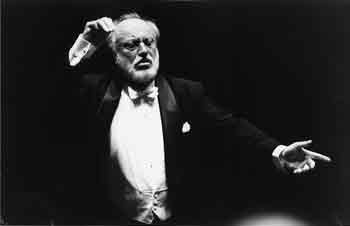Tharaud Champions Satie
Erik Satie: Avant-dernières pensées, A. Tharaud and Friends (released on February 10, 2009) Harmonia Mundi HMC 902017.18 Online scores: Erik Satie |
The first disc is devoted to the solo piano music, arranged in a program around the famous Gnossiennes, played just as they should be, languorous but simple, with few adjustments of the gentle, undulating -- but not oily -- pace. The best definition of what a Gnossienne is, to my knowledge, is an imagined dance named for a woman of Knossos in Crete (a Gnossien is a resident of Knossos). Like the Gymnopédies (one of them is included here), an equally mysterious word that may or may not mean a naked dance, their unusual scalar vocabulary and free, vaguely metered rhythmic sense may be an evocation of or tribute to imagined Greek music. To represent a much more extensive oeuvre, Tharaud's selections feature the many sides of Satie's style, including the satirical (Véritables Préludes flasques), jazz-influenced (the rag Le Piccadilly), surreal (Descriptions automatiques, including the Habanera-like Sur un vaisseau), winkingly postmodern (the ridiculous Beethoven parody in endless hammered cadences in Embryons desséchés), and experimental (the prepared piano jangling like percussion and banjo, in the seven pieces from Le piège de Méduse).
 A second disc features pieces requiring two musicians, to mixed success. The four-hands piano works (Trois morceaux en forme de poire, La Belle Excentrique, and Cinéma), with pianist Éric Le Sage, are a delight to have in my collection, as are lesser-known works for tenor (the clear-voiced Jean Delescluse) and violin (the luscious Stradivarius of Isabelle Faust). Poor trumpeter David Guerrier is heard for only about 15 seconds at the end of La statue retrouvée. It was an ingenious idea to use the rougher voice of cabaret singer Juliette, and her distinctive works so well in the comic songs like Chez le docteur, but less so in the ballads like Je te veux, where a more refined sound is missed. At the end of the final track (5:30, after long silence), some uncredited words are spoken (by Tharaud?): "J'ai plus de plaisir à mesurer un son que je n'en ai à l'entendre. [...] Que n'ai-je pesé ou mesuré ? Tout de Beethoven, tout de Verdi, etc. C'est très curieux. [...] Passons. Je reviendrai sur ce sujet." (I take greater pleasure in measuring a sound than I do in hearing it. [...] What have I not weighed or measured? All of Beethoven, all of Verdi, etc. It's very strange. [...] Let's move on. I will come back to this subject). It turns out that these are a few lines spliced together from Satie's Mémoires d'un amnésique (Memoirs of an amnesiac). Let us hope it is a sign of another Satie album to come from Tharaud and Co.
A second disc features pieces requiring two musicians, to mixed success. The four-hands piano works (Trois morceaux en forme de poire, La Belle Excentrique, and Cinéma), with pianist Éric Le Sage, are a delight to have in my collection, as are lesser-known works for tenor (the clear-voiced Jean Delescluse) and violin (the luscious Stradivarius of Isabelle Faust). Poor trumpeter David Guerrier is heard for only about 15 seconds at the end of La statue retrouvée. It was an ingenious idea to use the rougher voice of cabaret singer Juliette, and her distinctive works so well in the comic songs like Chez le docteur, but less so in the ballads like Je te veux, where a more refined sound is missed. At the end of the final track (5:30, after long silence), some uncredited words are spoken (by Tharaud?): "J'ai plus de plaisir à mesurer un son que je n'en ai à l'entendre. [...] Que n'ai-je pesé ou mesuré ? Tout de Beethoven, tout de Verdi, etc. C'est très curieux. [...] Passons. Je reviendrai sur ce sujet." (I take greater pleasure in measuring a sound than I do in hearing it. [...] What have I not weighed or measured? All of Beethoven, all of Verdi, etc. It's very strange. [...] Let's move on. I will come back to this subject). It turns out that these are a few lines spliced together from Satie's Mémoires d'un amnésique (Memoirs of an amnesiac). Let us hope it is a sign of another Satie album to come from Tharaud and Co.120'07"


























































